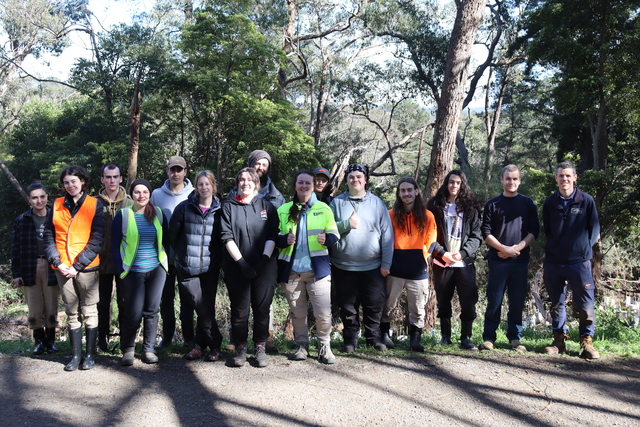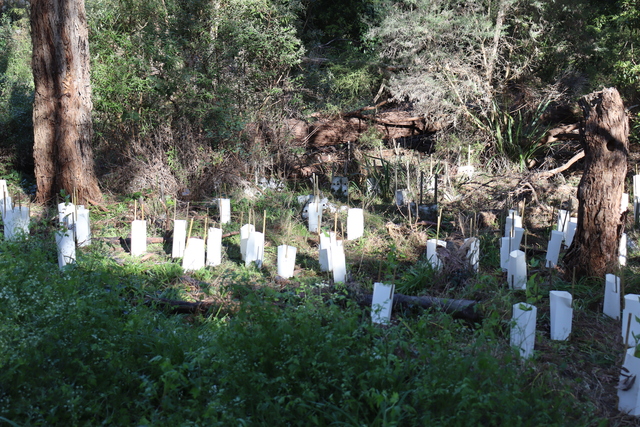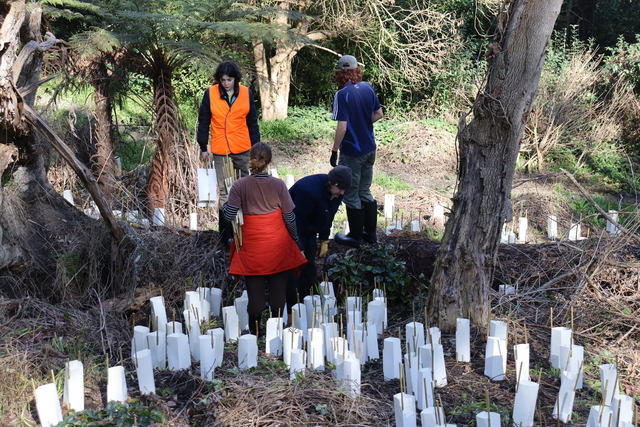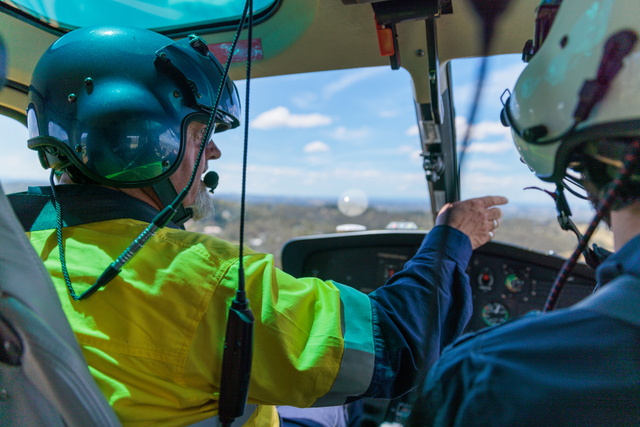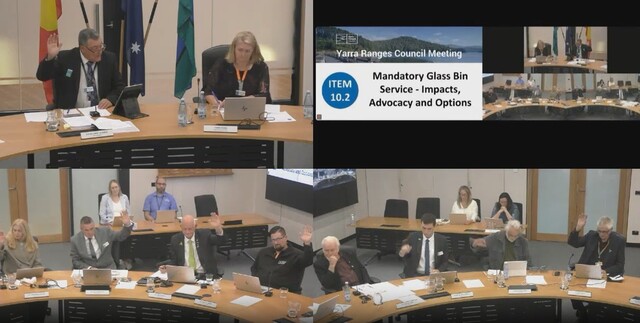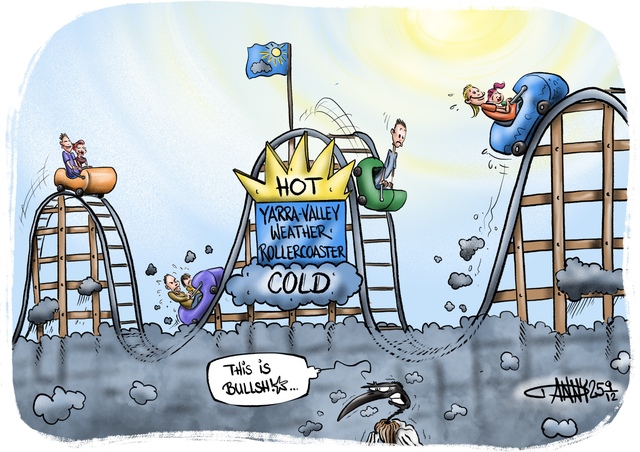Conservation and revegetation was the objective of a joint planting expedition along a Lilydale section of the Warburton Rail Trail on Tuesday.
The initiative brought together members of Yarra Ranges Council’s (YRC) bushland management team and Box Hill Institute’s (BHI) conservation and ecosystem management students to plant over 1000 Indigenous species on 6 August.
Rehabilitating the undergrowth, the bushy shrubs and canopy began by first removing both English Ivy and angled onion, introduced weeds that harm native plants.
YRC bushland management officer Ben O’Leary said preparation of the site took the best part of 12 months to ensure new plants would have the best chance possible.
“The preparation is critical. If we’re not doing the preparation work, you can put all the plants in you want, but the likelihood is they’ll probably fail,” he said.
“We’ve had a team of contractors come in periodically and treat those weeds to make sure that the site’s ready to go, and that way all those weeds are not so much of an issue this time next year.”
Ben said the 16 students helped plant a variety of species that were “all indigenous and of local provenance” with seeds having been collected locally and grown by Mooroolbark’s Candlebark Community Nursery.
For one student, Jarvis Lewis-James, who is also a volunteer with the nursery, it was a nice cyclical moment.
“Working at the nursery, growing these plants is really fulfilling, because a lot of these I actually collected the seed from originally, so getting to come out and actually plant them is really cool,” he said.
Almost halfway through his diploma, Jarvis has developed a keen interest in the range and function of plants and their impact on the environment.
“I find plants particularly interesting because there’s such a wide diversity of them, and the more you learn about them, the more you find out about the specific ecological niches they fit into,” he said.
“As a part of that you get to learn more about the local landscape, the geology and the way that impacts the vegetation that grows in those areas. I find all that kind of information really, really interesting.”
Combining both passion for Australian fauna and a desire to help, Sarah Byatt said getting to restore and rehabilitate a small part of the land near where she lives was a huge privilege.
“It’s really important that some people are trying to help the populations grow, and try to be mindful of how we coexist with the place where we live,” she said.
“It’s upsetting when you see people who don’t care about those things and don’t have respect for the land that we live in.”
Midway through her diploma, Sarah said getting out of the classroom to do something hands-on and practical was a great way to cement the theoretical learnings.
“You learn about how animals behave and how it all works and you don’t really get that in a classroom,” she said.
“You can read papers all day about how certain species behave but it’s completely different seeing it in person and there’s a more intrinsic understanding that you gain.”
Working to replenish the popular walking, biking and running destination of the Warburton Trail, Sarah said even if every person helped pick up rubbish, it would go a long way to restoring the natural corridor.
“I think everyone does feel upset when they see rubbish. You can ignore it all you like but I think everyone understands that it’s not healthy and it’s not sustainable and it’s not where we want to be.
“It’s really important to just think about the future, even selfishly if you have to, even if you’re like, ‘well, I hate the way it looks’ then help fix it. Help help it get better. Help it grow.”
For fellow student Jack, getting to live out his childhood passions of being in nature, having grown up camping often, he said he has since developed a greater appreciation for the Yarra Ranges’ environment.
“You don’t realise how lucky we are and how much [the environments] do differ. Before coming into the course I’d just look at the bush and assume it’s all the same. It’s amazing to think about how many actual plants we tangibly have down here,” he said.
Because the Warburton Rail Trail is considered a wildlife corridor, Ben said this project aimed to put habitat back for local fauna, as well as protect the waterways, with a total of 1200 plants planted by the YRC team and BHI students.
This project, however, only formed one part of a much larger planting program.
“Our team will put in about 70,000 plants this year across public land and then we’ve got another team at the council putting 70,000 plants, thereabouts, on private land,” Ben said.
“So we’re working with as many schools, TAFEs and community groups as we can. It’s really nice to be able to work with Box Hill TAFE because it’s the next generation of environmental practitioners.”
For each individual looking to help or have an impact in their own backyard, Jarvis and Ben gave some advice.
“Don’t just plant native, plant local. Go to local, indigenous nurseries and get plants that are local to the area. They’ll grow better. They help protect our genetic diversity here,” Jarvis said.
“The problem we’re seeing in a lot of reserves is hybrids between garden variety native plants and the local indigenous forms, and it’s leading to a massive loss in genetic diversity. So it’s really, really important that you plant local.”
Ben said if people want to lend a hand, be a caretaker or learn about the local environment, there’s a number of Friends of groups and webinars to join.
To enquire about volunteering, go to yarraranges.vic.gov.au/Community/Volunteer/Environmental-volunteering

